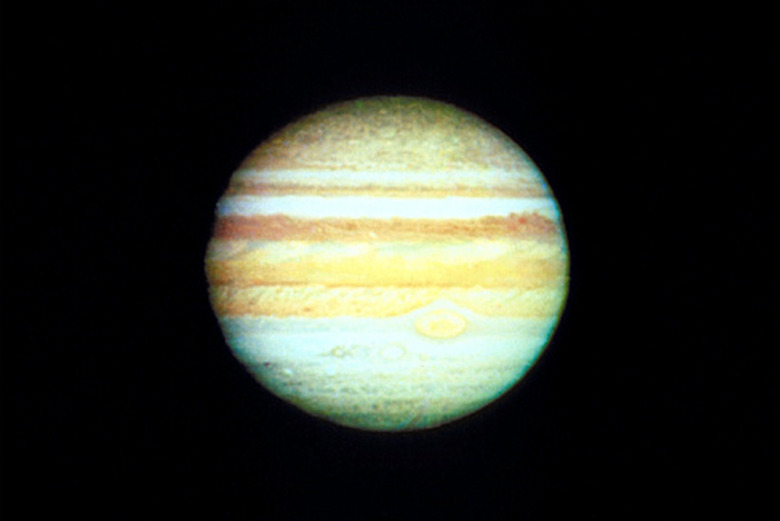What Are The Similarities & Differences Between The Sun & Jupiter?
The sun is a star and Jupiter is a planet. Specifically, Jupiter is the largest planet that revolves around the sun, and it has several characteristics that make it similar to the sun, including composition and its own mini-system. However, despite these similarities, there are important differences that make the sun a star and Jupiter a planet, specifically in considering what occurs in their cores.
Star vs. Planet
Star vs. Planet
The defining characteristic of a star is that it is hot enough and dense enough to have nuclear fusion occur in its core. Nuclear fusion occurs when the protons from hydrogen atoms combine to create helium atoms; photons and energy are released as a byproduct of nuclear fusion. Jupiter, despite being an extremely large planet (all the other planets in the solar system could fit inside of it), is not nearly as large as the sun, and it does not have nuclear fusion occurs in its core.
Composition
Composition
Jupiter and the sun are both very similar in their overall composition, as they are both made up almost entirely of hydrogen and helium. The sun has a core that is so hot that it causes hydrogen to separate into individual electrons and protons; Jupiter's core is made of liquid metallic hydrogen. Both the sun and Jupiter are similar in composition to what the solar system originally was like, which was almost entirely hydrogen and helium. The primary difference here is that the sun is much larger than Jupiter.
Solar System
Solar System
The size difference between Jupiter and the sun is so large that the sun has the ability to hold distant objects in its gravitational field — as shown in Newton's Universal Law of Gravitation, the more massive an object is, the farther out smaller objects are drawn to it. In addition to holding eight planets in its orbit, the sun has several smaller, more remote objects (such as comets) that revolve around it. The sun is so large that despite all the objects in its revolution, it still makes up over 99 percent of the mass in the solar system.
Jupiter's Mini-System
Jupiter's Mini-System
Despite being much smaller than the sun, Jupiter is still large enough to exert its own gravitational field, and as a result it has several moons that orbit it. The four largest moons (Io, Europa, Ganymede and Callisto) were discovered by Galileo in 1610; a dozen smaller moons have been discovered since then. In addition to its satellites, Jupiter also has a thin ring system that was first seen by the Voyager I spacecraft.
Cite This Article
MLA
Lichtenstein, Drew. "What Are The Similarities & Differences Between The Sun & Jupiter?" sciencing.com, https://www.sciencing.com/similarities-differences-between-sun-jupiter-8485067/. 24 April 2017.
APA
Lichtenstein, Drew. (2017, April 24). What Are The Similarities & Differences Between The Sun & Jupiter?. sciencing.com. Retrieved from https://www.sciencing.com/similarities-differences-between-sun-jupiter-8485067/
Chicago
Lichtenstein, Drew. What Are The Similarities & Differences Between The Sun & Jupiter? last modified March 24, 2022. https://www.sciencing.com/similarities-differences-between-sun-jupiter-8485067/
